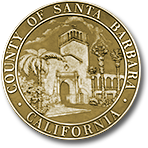To report possible Human Trafficking
Call 911 if it is an Emergency or needs immediate law enforcement attention
Non-Emergency: 805-683-2724
E-mail: HumanTrafficking@sbsheriff.org (non-emergency only)
The National Human Trafficking Resource Center Hotline
1-888-373-7888
The U.S. Department of Justice Hotline
1-888-428-7581
Human trafficking, also known as trafficking in persons, is a crime that involves compelling or coercing a person to provide labor or services, or to engage in commercial sex acts. The coercion can be subtle or overt, physical or psychological. Exploitation of a minor for commercial sex is human trafficking, regardless of whether any form of force, fraud, or coercion was used.
There is no single profile of a trafficking victim. Victims of human trafficking can be anyone—regardless of race, color, national origin, disability, religion, age, gender, sexual orientation, gender identity, socioeconomic status, education level, or citizenship status.
Although there is no defining characteristic that all human trafficking victims share, traffickers around the world frequently prey on individuals who are poor, vulnerable, living in an unsafe or unstable situation, or are in search of a better life. Trafficking victims are deceived by false promises of love, a good job, or a stable life and are lured or forced into situations where they are made to work under deplorable conditions with little or no pay. In the United States, trafficking victims can be American or foreign citizens. Some of the most vulnerable populations for trafficking in the United States include American Indian/Alaska Native communities, lesbian-gay-bisexual-transgender-questioning individuals, individuals with disabilities, undocumented migrants, runaway and homeless youth, temporary guest-workers and low-income individuals.
Victims can be found in legal and illegal labor industries, including child care, elder care, the drug trade, massage parlors, nail and hair salons, restaurants, hotels, factories, and farms. In some cases, victims are hidden behind doors in domestic servitude in a home. Others are in plain view, interact with people on a daily basis, and are forced to work under extreme circumstances in exotic dance clubs, factories, or restaurants. Victims can be exploited for commercial sex in numerous contexts, including street prostitution, illicit massage parlors, cantinas, brothels, escort services, and online advertising. Trafficking situations can be found across the United States.
Just as there is no one type of trafficking victim, perpetrators of this crime also vary. Traffickers can be foreign nationals or U.S. citizens, family members, partners, acquaintances, and strangers. They can act alone or as part of an organized criminal enterprise. People often incorrectly assume that all traffickers are males; however, the United States has prosecuted cases against women traffickers. Traffickers can be pimps, gang members, diplomats, business owners, labor brokers, and farm, factory, and company owners.
For additional information:
The United States Department of Justice (https://www.justice.gov/humantrafficking)
State of California Department of Justice (https://oag.ca.gov/human-trafficking)
Santa Barbara County District Attorney (https://www.countyofsb.org/da/humantrafficking.html)

 CountyofSB.org
CountyofSB.org 
